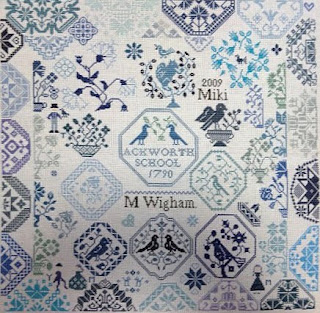 Augusta Auction's New York City sale to be held at St. Paul Auditorium, 15 Columbus Avenue, New York, NY 10019 on 2 November, 2009, includes nearly 1,500 garments, textiles, and accessories. From New Jersey’s Montclair Art Museum comes Victorian clothing, Virginia’s Colonial Williamsburg provides rare 17th-18th Century women’s shoes and men’s 18th Century garments. There are unique woven and embroidered Chinese garments and textiles spanning three centuries beginning in 1600 from the collection of the Museum of Fine Arts, and from the Brooklyn Museum there is definitive 20th Century couture not seen for more than twenty years.
Augusta Auction's New York City sale to be held at St. Paul Auditorium, 15 Columbus Avenue, New York, NY 10019 on 2 November, 2009, includes nearly 1,500 garments, textiles, and accessories. From New Jersey’s Montclair Art Museum comes Victorian clothing, Virginia’s Colonial Williamsburg provides rare 17th-18th Century women’s shoes and men’s 18th Century garments. There are unique woven and embroidered Chinese garments and textiles spanning three centuries beginning in 1600 from the collection of the Museum of Fine Arts, and from the Brooklyn Museum there is definitive 20th Century couture not seen for more than twenty years.Karen Augusta, a costume and textile appraiser for the PBS series, Antiques Roadshow, has been representing museum collections at auction throughout the past decade. In 2008 with her husband, Robert Ross, she founded Augusta Auctions and brought their fashion auctions to New York City. She says, 'It’s an interesting time for collections and collectors as knowledge of textile conservation has grown, so has its cost and the cost of museum quality storage. As a result, the museum back rooms have opened and there is more sharing of items important to the history of western culture. This wave of deaccessioning actually increases the value of these artifacts as knowledge of their availability spreads quickly in the information age. It’s encouraging to see this is no longer a market of insiders.'
What do you think?

















%5B1%5Db.jpg)
































